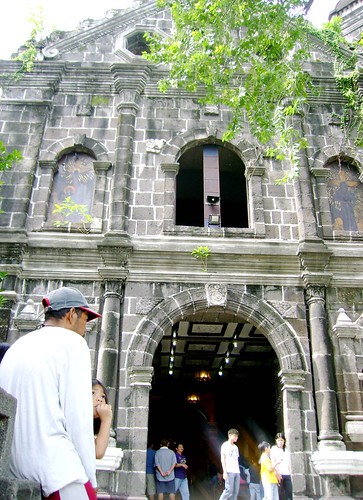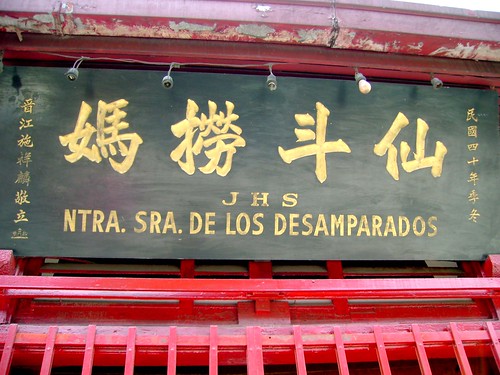
The house that built Sta Ana
Old home, Santa Ana Manila
I went home last Saturday, 19th of June, in Muntinlupa - our home for the last decade. It was a pleasant feeling seeing my old parents and two of my brothers – healthy and happy, I’m the happiest for everything is well back home.
The following day, Sunday, I went to Santa Ana – my birthplace. We spent some time here before moving to Makati. I consider myself lucky for I can call myself a Manileno – and what better time to be proud of the ever loyal city than in June (24th), when it celebrates its always drizzly foundation day.
Originally celebrated as "Foundation Day", designated by the great Alcalde of Manila, Arsenio Lacson, the announcement was heavily criticized by nationalist that the word "foundation" is erroneous since a Manila existed long before Legazpi came, for this Quijano de Manila wrote "Lacson acted on Faustian man’s obsession with definite historical data; an invented ‘nationalist’ date to mark the foundation of pre-1571 Manila would be pure myth-making", unfortunately or fortunately for some, Villegas gave in to the criticism and ended up changing its name from Manila's foundation day to "Araw ng Maynila".
Santa Ana de Sapa, as it was known during the Spanish years was Namayan, pre-colonial settlement prior to becoming a Filipino town. Excavations exposed that the river place is home to waterway dwellers – the kingdom of Namayan, seated in the Santa Ana of today was said to have stretched as far as La Laguna.
I have finally found my old town. Although I could not recall a single memory of Santa Ana, it felt right, here I learned how to walk and play and pray.
Sta Ana Church
Nuestra Señora de los Desamparados, declared a national shrine, is a historical Franciscan church that has been around since 1578 – it is the first ever mission outside Intramuros. However it was only in 1720, when Fray Vicente Ingles headed the construction of the iglesia using hard materials, the project the good Priest started was completed in 1725.
The beautiful church was badly damaged during the American bombing of Manila, the liberation brought massive destruction, it was during this period that Intramuros lost almost all of its iglesia. It was indeed a blessing that the great Filipino Architect, Juan Nakpil and Engineer Arturo Mañalac took on the project of restoring the old church.
The church houses the miraculous image of Señora de los Desamparados, a replica of the one in Vallodolid. It is said that both icon was made to touch each other before it was sent here in 1719 by Fray Ingles. At the back of the altar is an “elaborately carved reredos behind the main altar patterned after the Basilica of St. Peter in Rome”.
At the back of the church there is a Santa Ana cultural and traditional symbol. La Virgen del Pozo. A water well that was built in 1720 was so popular here that people were said to line up here. For centuries, this place has been a location of miracles for the Manileño, a well that can be found here was said to possess miraculous powers. So famous is the well that people continually offered flowers, candles and food for thanksgiving until it was closed down by the Americans during the cholera outbreak.

The Chines Filipino's temple dedicated to the our Lady of the Abandoned
The Virgen del Pozo also became a tradition for the Chinese Filipino, confirmation of this is their temple that was built in front of the legendary well. A historical marker states, “it became a tradition for some Chinese devotees of Virgen del Pozo to visit this little Chapel on their new year celebration to offer various intentions after coming from the Chinese Buddhist temple located just opposite the site…the folks learned the custom of veneration by lighting candles with bowed heads and clasped hands while kneeling on provided cushions…call it a legend or a tradition, the Virgin of the Well and her shrine have a religious and historical value to the folks of Santa Ana, the waters that once sprung from this well will indeed become a symbol not only of their love and devotion for their patroness but moreover, it will be a testimony of their living faith as God’s people and Maria’s children”.



[...] My Santa Ana « With one's past… [...]
ReplyDelete